A Podiatrist Says These Running Shoes Can Relieve Plantar Fasciitis Pain
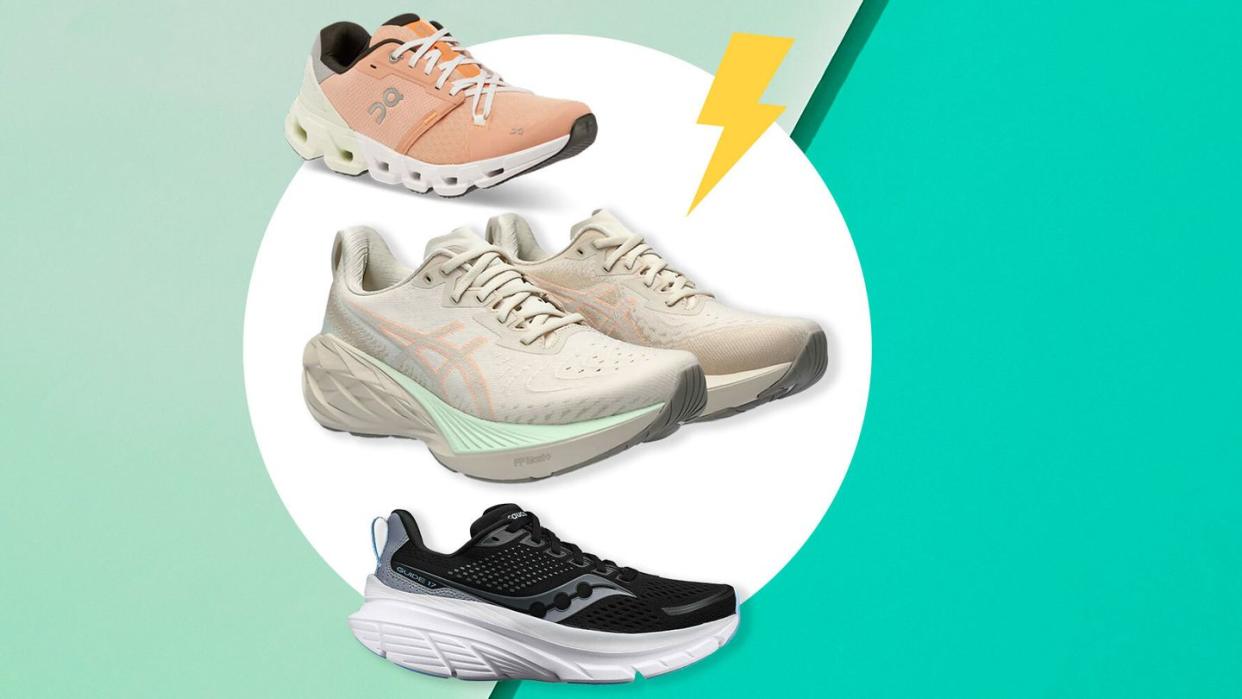
"Hearst Magazines and Yahoo may earn commission or revenue on some items through these links."
Have you been running with arch pain, thinking it’s not a big deal? Well take a pause, because that aching could be plantar fasciitis–which is a big deal when ignored. Plantar fasciitis occurs when the fascia, aka your foot arch, gets inflamed from the accumulation of stress overtime. “This usually occurs at the medial band of the plantar fascia or the inside of the heel, and can manifest as arch pain,” says podiatrist Bradley Schaeffer, DPM, a foot surgeon and owner of Central Park Sole in New York. According to Schaeffer and the rest of the experts we spoke with, treating plantar fasciitis requires a combination of therapy and treatments—think stretching, foot massage, and (occasionally) surgery, depending on the individual's foot needs. But Schaeffer says the best running shoes for plantar fasciitis could help alleviate and prevent arch and foot pain.
Peep the best running shoes for plantar fasciitis, below
In general, look for sneaks that have a thick, firm, but well-cushioned sole that puts a buffer between your arch and a hard surface. "[This sole] helps absorb impact while running," says personal trainer Melissa Kendter, ACE. Also, make sure to find an insole that's firm and stable enough to keep your feet from rolling (overpronation), a common symptom for people with arch pain. Of course, the absolute best running sneaker for you depends on the fit, which is why we recommend seeing a podiatrist for the most specific shoe recommendation. But if you're strapped for time and want to buy a sneak online, we consulted with our WH Editors and experts to find great running shoes for plantar fasciitis that look and feel amazing on your feet.
Clifton 9
Both Kendter and Schaeffer recommend the King of Cushion for plantar fasciitis sufferers. “The Clifton 9 is great because it has balanced cushioning [and] a compression molded foam midsole,” says Kendter. Schaeffer says it provides enough support for your arch, while still offering plenty of cushion to keep your feet comfortable as you log miles in it.
WH News Editor Currie Engel ran in a marathon in the Clifton 9, and found that it provided enough stability to keep her feet from rolling. "I felt like I was running on clouds," she said. We also love how light it is, while posting a very cushioned heel to soften the impact on plantar fasciitis during your strides. Plus, the American Podiatric Medical Association (APMA) has given this sneaker its seal of approval.
One note: Kendter says some runners with plantar fasciitis could benefit from a higher heel-to-toe drop, which is the measurement between the height of the shoe's heel and forefoot. Kendter says that a drop of about 10 millimeters helps reduce feet bending, and lessens pressure on the heel and arch. The Clifton's heel-to-toe drop is five millimeters, which is a bit lower than her preference.
Read more: Hoka Clifton 9 Review
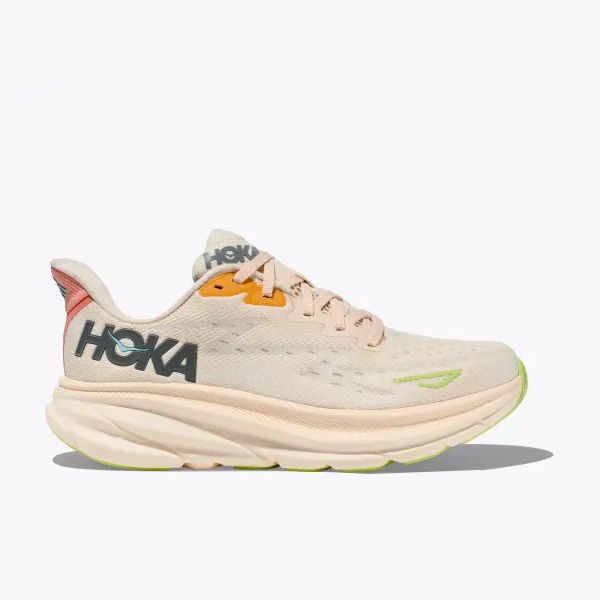
Clifton 9
Hoka
$145.00
Ghost 15
“It has a soft feel, smooth ride, and trusted fit,” says Kendter. We love that this Ghost 15 comes in a variety of widths (four), and a foot-hugging upper that feels snug enough to keep your feet feeling locked-in and secure, without being too tight.
Schaeffer says that the Ghost 15 does a bang-up job of alleviating stress on the heel, which is a big contributor to plantar fasciitis pain. That's because of its neutral design, which is cushioned, but not plush, to keep your heels from rocking and rolling during runs. No wonder our fitness editors say it's the brand's best daily running shoe.
"It provides a reliable, smooth, feeling," our contributor said in her testing of the best Brooks running shoes. That comes through even on hard pavement, roads and streets thanks to its cushioned heel and lightweight, versatile design."
Though some reviewers say that the Ghost 15's high arch might feel uncomfortable, comparing it to a tennis ball pressing against your foot's arch. But this slight discomfort is a tradeoff for firm support, which plantar fasciitis sufferers need.
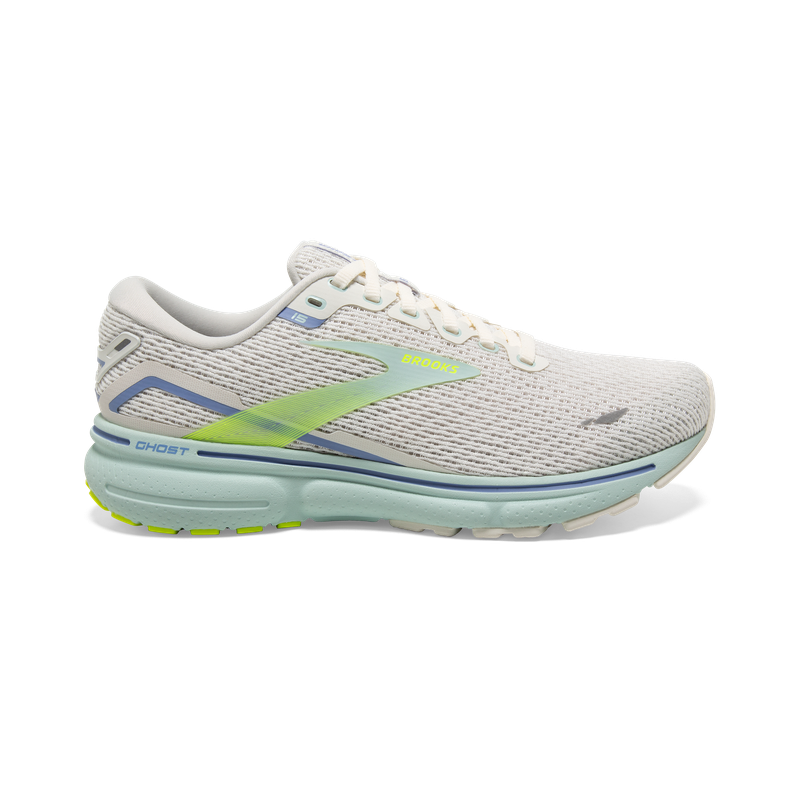
Ghost 15
zappos.com
$139.95
Adrenaline GTS 23
People with plantar fasciitis are more likely to run with their feet rolling in (overpronation) or out (over supination). The Adrenaline GTS 23 might help. "I find that this has a great neutral position to support the heel [and] arch,” says Schaeffer. Along with the neutralizing support, we like that these running shoes have a midsole that quickly transfers the pressure away from your heel, and plantar fascia, as you run.
However, we think there could be a bit more cushioning under the heel of the foot to further lessen impact on your plantar fascia.
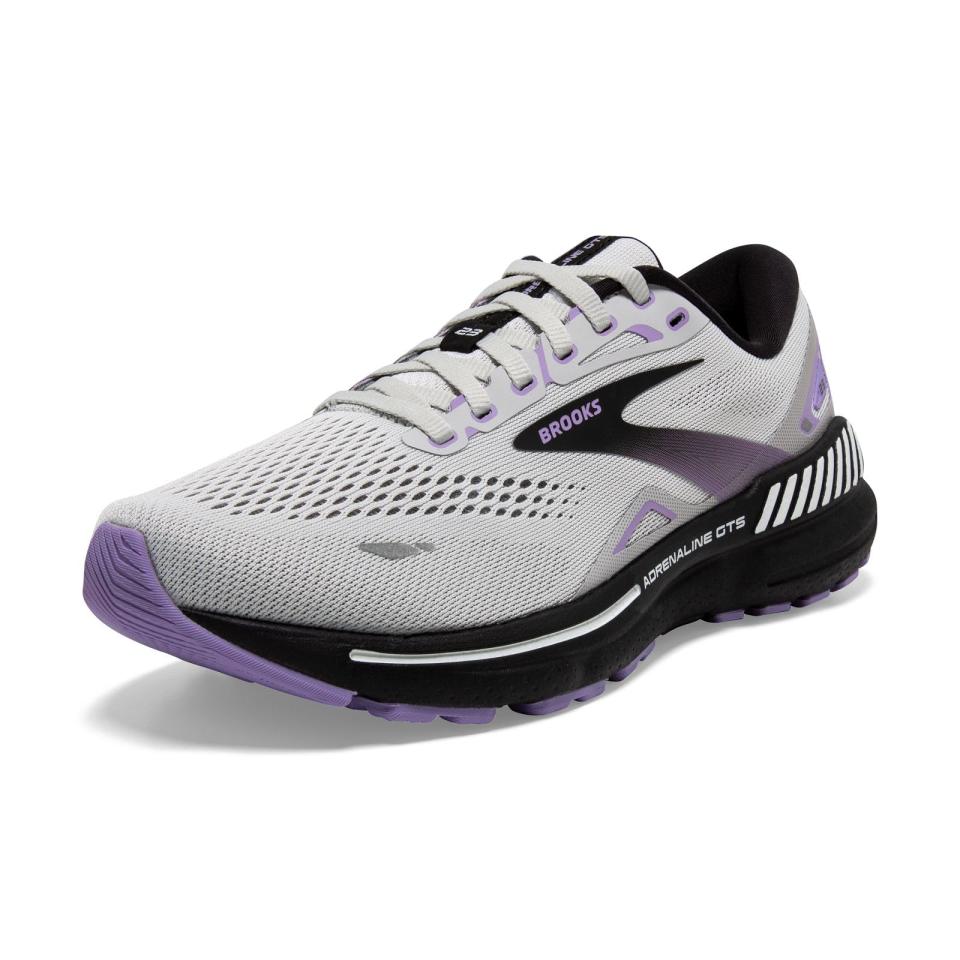
Adrenaline GTS 23
amazon.com
$140.00
Endorphin Pro 3
This running shoe is one of Kendter’s favorites for racing, citing its "speedroll" technology–which is the upward curve at the front of the shoe that helps your feet roll from heel to toe with less effort, so you can move faster with ease. That technology also features additional cushioning from the heel to the ball of the foot, which helps lessen the impact on your plantar fascia. Plus, the combination of the cushioned midsole, foot-hugging fit, and lightweight build make it a great every day sneaker.
A downside to this form-fitting sneaker is that the tongue is prone to moving around while you run. That can be uncomfortable on the top of the foot during long jogs. Also, this sneaker is only available in medium widths, which may be too narrow for wide feet.
Read more: Best Saucony Running Shoes
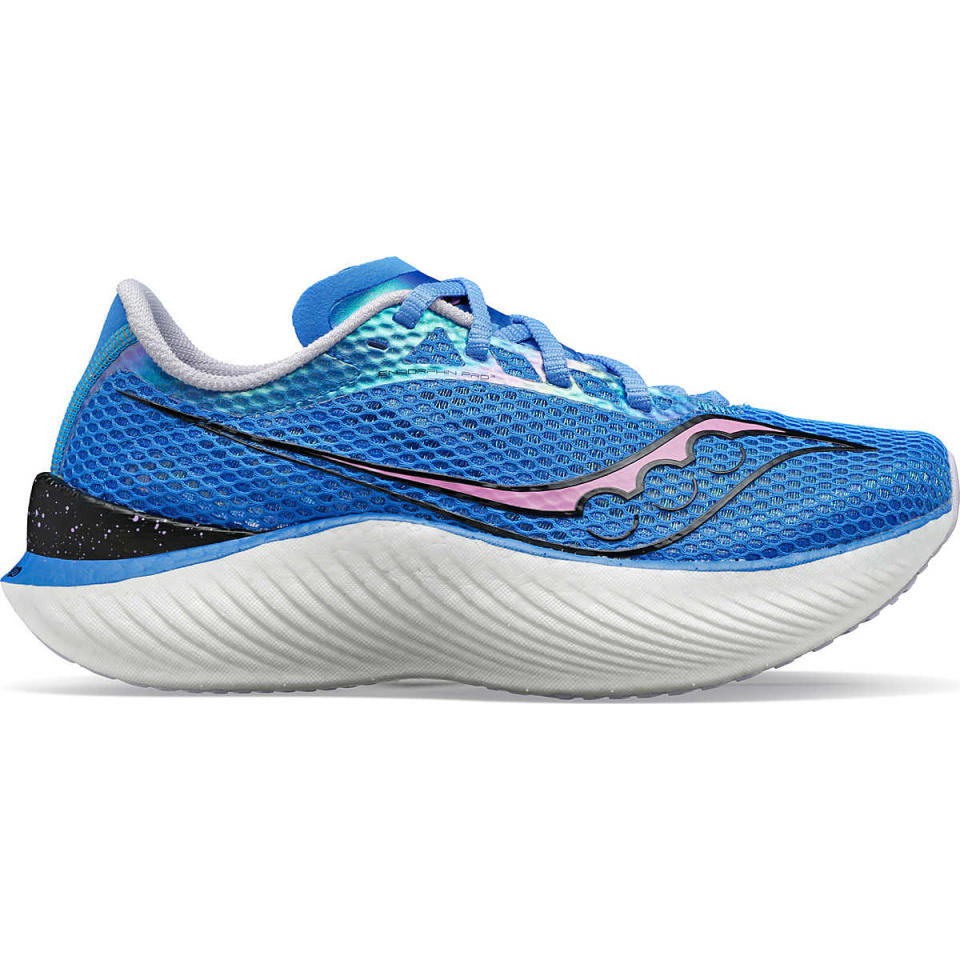
Endorphin Pro 3
saucony.com
$275.00
SauconyGuide 17
This running shoe is the one to reach for when you want a sneaker that supports your foot from all sides. We love the cushioned heel and firm insole. Plus, within the upper of this sneaker, there are higher sidewalls to keep your feet from rolling in or out. Kendter says this is one of her top picks due to the “smooth ride with max comfort and ultimate support” that this running shoes provide.
While the insole is firm, the arch support is standard. So, if you need arch support that is more pronounced you’ll want to swap this insole for a different orthotic. Additionally, the heel-to-toe drop is lower than Kendter's recommended 10 millimeters.
Read more: Best Plantar Fasciitis Insoles
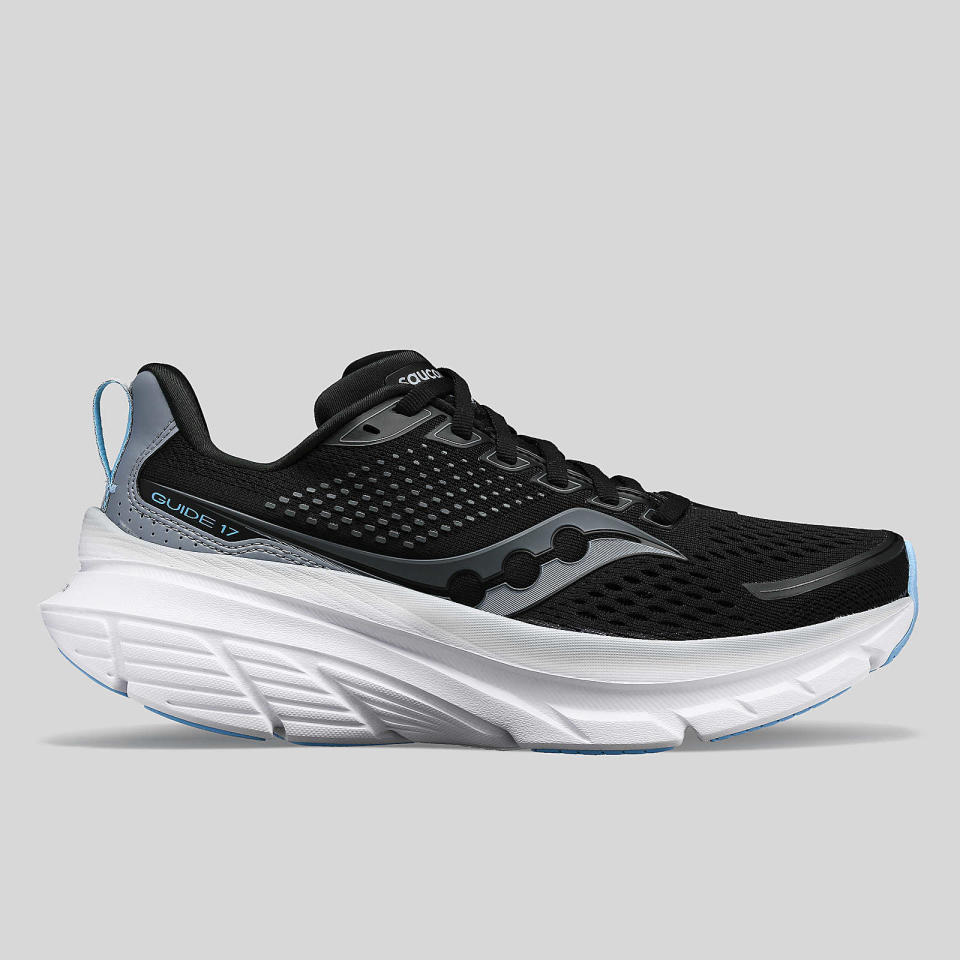
Guide 17
saucony.com
$140.00
SauconyHydro Sport Water Shoe
John A. Mercer, PhD, a professor of kinesiology and nutrition sciences at the University of Nevada in Las Vegas names pool running as a helpful functional exercise once plantar fasciitis sets in. And, he says this sneak will help you run safely run on a slippery pool floor.
We love that this is made for water exercises. The rubber outsole provides enough traction so that you can run along the bottom of a pool. Plus, it dres fast and has a chlorine-friendly mesh upper. The built-in drainage system also lets water flush quickly out of the shoe. It also has a firm insole that's ideal for supporting the foot from the heel to the ball of the foot, aka underneath your plantar fascia.
A downside to this running shoe is that the inner arch support doesn’t come up very high underneath your foot. So, while it is able to deliver firm arch support, the height of the support doesn't come up super high to conform to high arches. Basically, if you have a normal or flatter arch, you'll get the most bang for your buck–aka foot support.
Read more: Best Water Shoes
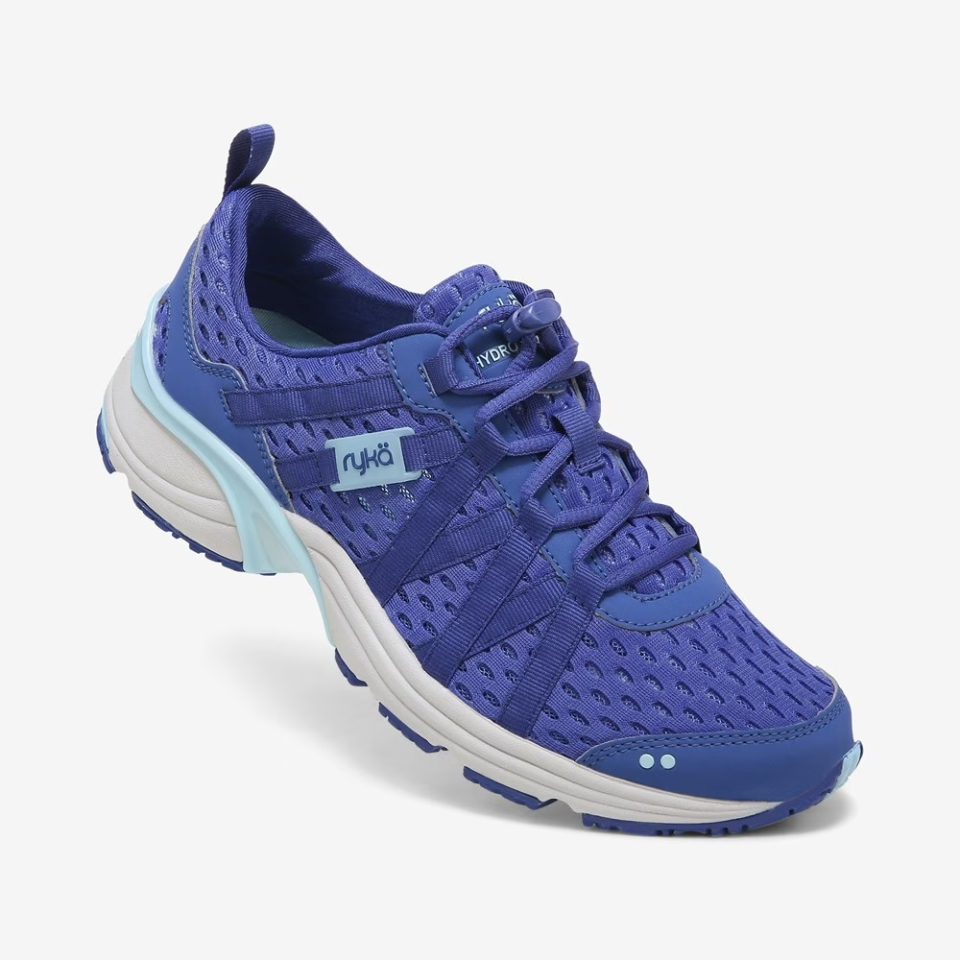
Hydro Sport Water Shoe
ryka.com
$69.99
RykaHoka Bondi 8
This Hoka sneaker won’t throw you off balance while you run. “It provides a nice mix of cushion and stability,” according to Schaeffer. We like that the plush cushioning underneath the shoe takes the pressure off of aching heels and sore arches. Plus, this sneak keeps your feet in a neutral position so you don't have to worry about rolling in or out, which can happen when you have plantar fasciitis.
The only caveat is that the heel-to-toe drop isn’t close to Kendter's recommended 10 mm. A steep drop takes the pressure off of your heel faster by quickly shifting the pressure of your bodyweight toward the front of your foot. So, instead of feeling that quick shift, you'll just feel plush amount of cushioning underneath your heel to ease the pressure off of your plantar fascia–like a foam pillow to help cushion the impact of your heel striking the ground.
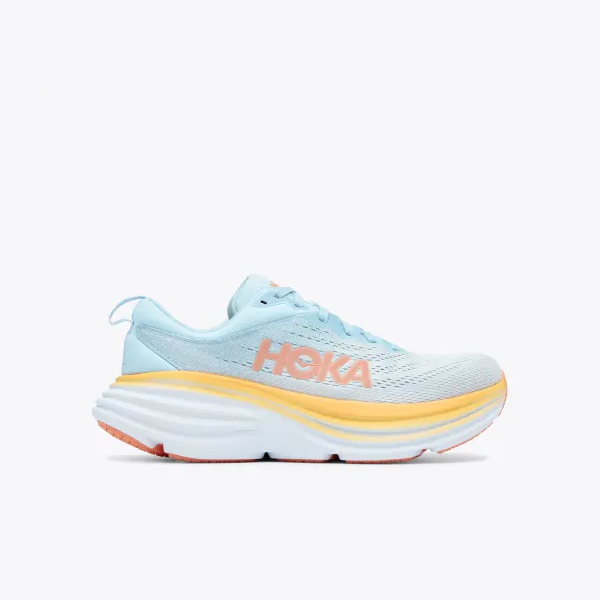
Hoka Bondi 8
Hoka
$131.99
HokaNovablast 4
This running shoe will blast you into comfort. “This has cushioning, a higher stack height, and provide neutral support,” says Kendter of the Novablast 4, which is also one of her top picks. We love the responsive cushioning that this sneaker provides underneath your aching plantar fascia–aka the tender spot from your heel to your arch.
However, there could be a few improvements in other areas. There’s no firm arch support. So, if you feel more aches underneath the arch than the heel, try a different shoe. Also, narrower feet be warned that the medium width leans wider than a standard medium width. And, the actual wide width sizes are on a different product page.

Novablast 4
asics.com
$140.00
AscicsCloudflyer 4
Looking for a more stable shoe that can keep your feet from rolling? Then, check out this running shoe. “This is extremely well cushioned, comfortable, yet provides a firm and stable ride,” says Kendter. Usually, with plantar fasciitis, your foot will try to roll in or out to avoid the pain in the center of the foot. We love the Cloudflyer's external heel counter that keeps your foot in a neutral position, so you don't have to worry about your foot rolling in or out. Plus, there's additional cushioning under the heel to lessen the pressure on your plantar fascia, for more comfortable strides.
The only thing to be cautious of is the arch support. The insole isn't the most firm under the arch, so if you tend to feel foot pain towards the heel, you'll be fine. But, if your sore spot is under the arch, you might want to try a different shoe from this list. Fortunately, you can slip a custom orthotic (insole) into the shoe to add your own personalized arch support.
Read more: Best On Running Shoes
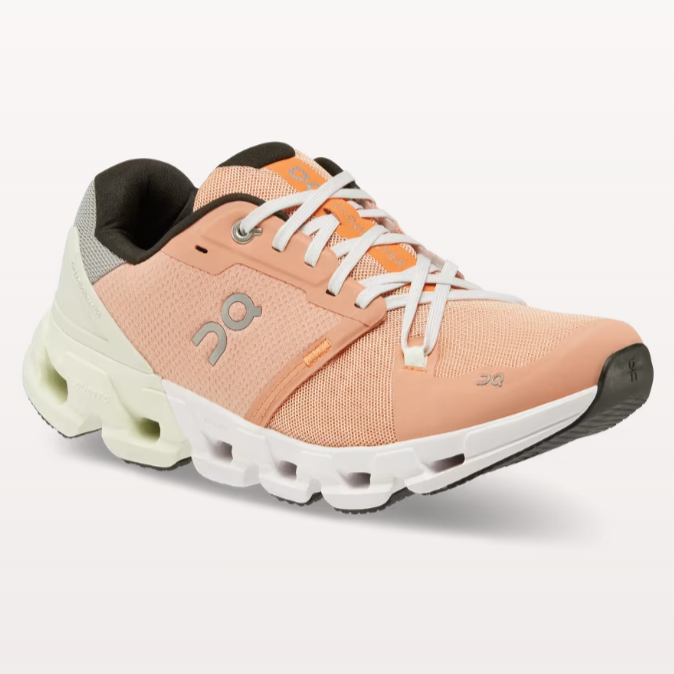
Cloudflyer 4
On Running
$129.99
Cloudflyer 4Why is plantar fasciitis a problem for runners?
Plantar fasciitis is a problem for runners because it makes running, or walking, incredibly painful. “Every time we hit the ground with the foot, we’re hitting the ground with 1.5 to two times our body weight,” says the professor Mercer, “and, you’re doing that every foot strike. So, in 30 minutes you’re easily reaching 2,500 foot strikes.” With that much impact, if you’re not taking the proper preventative measures, you’re nearly guaranteed to experience plantar fasciitis at some point. “The body will eventually tell you that you’re doing too much and it does that in the form of an injury,” he says.
Some common warning signs include pain at the heel, tightness from the ball of the foot to the heel (along the whole heel cord), pain when walking, limping, and/or foot swelling. The more you run with an actively inflamed fascia, the more it will hurt–especially if it’s not treated soon after noticing the aggravating sensation.
If you just try to run through the pain. Mercer says that you’ll only make things worse. “If you start running with a limp or something very pronounced, it then becomes obvious that you’re taking stress off of one area and placing it on another area,” he says. Mercer also emphasizes that if you end up shifting that pain to another part of the body, that area can end up becoming the new sore spot. And, ultimately, you’ll still be running with pain–just in a new area of the body.

Can the wrong shoes make plantar fasciitis worse?
The wrong shoe can make plantar fasciitis worse by putting more stress on your plantar fascia, which in turn can cause pain in other parts of your body. That's because using the wrong sneakers may cause your feet to overcompensate and shift that pain to another part of the body. “You could have plantar fasciitis in your left foot and end up feeling it in your right knee,” says Mercer.
Schaeffer says that your plantar fascia will be more comfortable in a running shoe that has a supportive insole. “This will decrease the tension on the plantar fascia and relieve your pain,” he says. Mercer adds that you want to make sure the shoe you run in always performs in top shape. That means, changing out your running shoe long before you notice visible signs of wear and tear on the outsole.

What to look for in running shoes for plantar fasciitis
Arch Support
Schaeffer says stable arch support in a neutral plane is essential. That means, you’ll want a shoe that has support along both the medial and lateral sides of the foot so that it doesn’t roll in (overpronation) or out (supination). “It is a paramount that we all be in neutral alignment, and that starts with our feet all the way up to our knees, hips and lower back,” Schaeffer says.
He also advises visiting your local medical provider to determine how your foot and ankle moves as you walk. Your provider will be checking to see if you walk with overpronation, over supination, or in a neutral manner. The results will inform what type of running shoe will be most supportive to you.
Fit
A proper fitting shoe for plantar fasciitis is incredibly personal. “Everyone's case can be a bit different,” says Kendter. She advises investing in a running shoe that truly fits your foot. It shouldn’t be too big, small, or snug. The insole should provide firm, stable, and neutral support. And, you’ll want a shoe with comfortable cushioning in the heel. In general, look for as much cushioning as possible that will also keep your foot balanced. “You want to avoid a shoe that is bendable, flimsy, and does not provide cushion,” she says.
Cushioning
“The type of cushioning that we’re going to look for is not too much, not too little,” says Schaeffer. He says that you don’t want to walk on something that’s as stiff as a rock, so it’s important to “find a good mix of cushion and support.” That blend is going to be unique for every foot experiencing plantar fasciitis because everyone’s heel strike is going to feel different in their own bodies. The sensations of inflammation are going to feel much different in your body than someone else's.
Drop
Kendter says that, for some, plantar fasciitis could benefit from a larger heel-toe drop. A drop of about 10 millimeters helps “reduce dorsiflexion during running and decrease the load on the Achilles and plantar fascia,” she says. Dorsiflexion is the position your foot is in when your heel strikes the ground. Also, an increased drop helps move your body forward. So, by reducing that sharp upward angle, you could find less pressure going into the back of the heel when you run.

Does plantar fasciitis get better?
In short, yes. But, the recovery process takes time and conscious effort to work. In some cases, says Mercer, it could take six months to a year to fully resolve. “Usually you’re going to need to aggressively stretch or do physical therapy in order to loosen up the plantar fascia on the bottom of the foot,” says Schaeffer. These plantar fasciitis exercises not only help in recovery, but also serve as a preventative measure.

Meet the experts
Bradley Schaeffer, DPM, is a board-certified podiatrist and foot surgeon at Central Park Sole in New York, NY.
Melissa Kendter, ACE, is a certified trainer and UESCA running coach. She's the host of The Performance Podcast.

How we selected
As WH editors, we're constantly testing the latest and greatest running sneakers on the market. For this story, we combed through our years of aggregate testing to find the best running shoes for plantar fasciitis. We considered sneakers' cushioning, arch support, heel-to-toe drop, and just how well they fit. We also consulted with Schaeffer and Kendter on their professional recommendations.

Shop more of our favorite running shoes
Best Cheap Running Shoes | Best Running Shoes For Beginners | Best Running Shoes For Wide Feet | Best Cushioned Running Shoes | Best Zero Drop Running Shoes | Best Walking Shoes | Best Running Shoes For Overpronation | Best Running Shoes For Flat Feet | Best Arch Support Running Shoes

You Might Also Like

